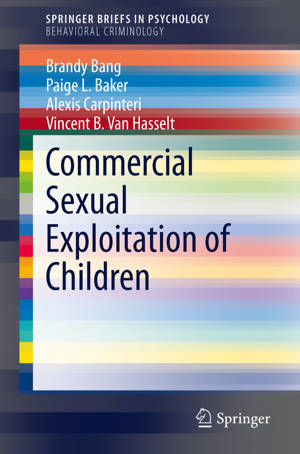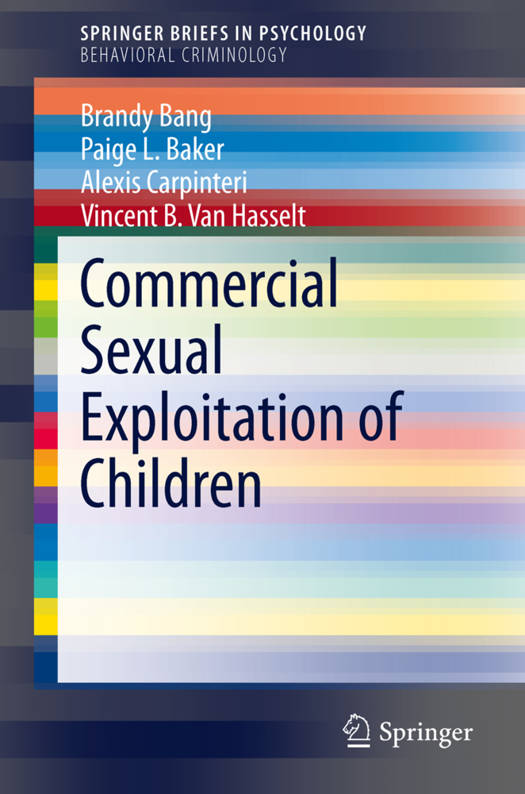
- Retrait gratuit dans votre magasin Club
- 7.000.000 titres dans notre catalogue
- Payer en toute sécurité
- Toujours un magasin près de chez vous
- Retrait gratuit dans votre magasin Club
- 7.000.0000 titres dans notre catalogue
- Payer en toute sécurité
- Toujours un magasin près de chez vous
Commercial Sexual Exploitation of Children
Brandy Bang, Paige L Baker, Alexis Carpinteri, Vincent B Van Hasselt
106,95 €
+ 213 points
Description
The commercial exploitation of children is a global crisis (Rahman, 2011; Svensson, 2006). However, media outlets and sociological researchers have successfully situated the problem as a primarily Asian, South American, or Eastern European concern. In the process, the exploitation of children in the United States has largely been ignored. The continued trafficking of international youth into this country, coupled with the growing rate at which American born children are targeted by interstate sex traffickers, speaks to the urgency with which the domestic exploitation of children must be addressed (Walker-Rodriguez & Hill, 2011). In fact, research suggests that an average of 250,000 American children and adolescents are at risk of commercial exploitation each year (Estes & Weiner, 2001). Further, there are indications that current data vastly underestimate the actual numbers of vulnerable and victimized youth (Chase & Statham, 2005). According to the U.S. Department of Justice (2007), no systematic efforts have been made to examine the commercial exploitation of children in this country. The low visibilities of the crime, combined with the inherent vulnerability of the victims, have facilitated the continued victimization of these children. The purpose of this book is to provide a critical analysis of the domestic, commercial exploitation of children. A careful explanation of the differing forms of commercial exploitation of children, victim and offender characteristics, and the mechanisms which maintain the problem will assist health care providers, researchers, and law enforcement in their efforts with this marginalized and understudied population. The authors begin with a comprehensive review of extant literature in this area. Additionally, case studies of child sexual exploitation are included to further illustrate the severity, complexity, and depravity of commercial exploitation in real life cases.
Spécifications
Parties prenantes
- Auteur(s) :
- Editeur:
Contenu
- Nombre de pages :
- 57
- Langue:
- Anglais
- Collection :
Caractéristiques
- EAN:
- 9783319018775
- Date de parution :
- 24-10-13
- Format:
- Livre broché
- Format numérique:
- Trade paperback (VS)
- Dimensions :
- 156 mm x 234 mm
- Poids :
- 104 g

Les avis
Nous publions uniquement les avis qui respectent les conditions requises. Consultez nos conditions pour les avis.






